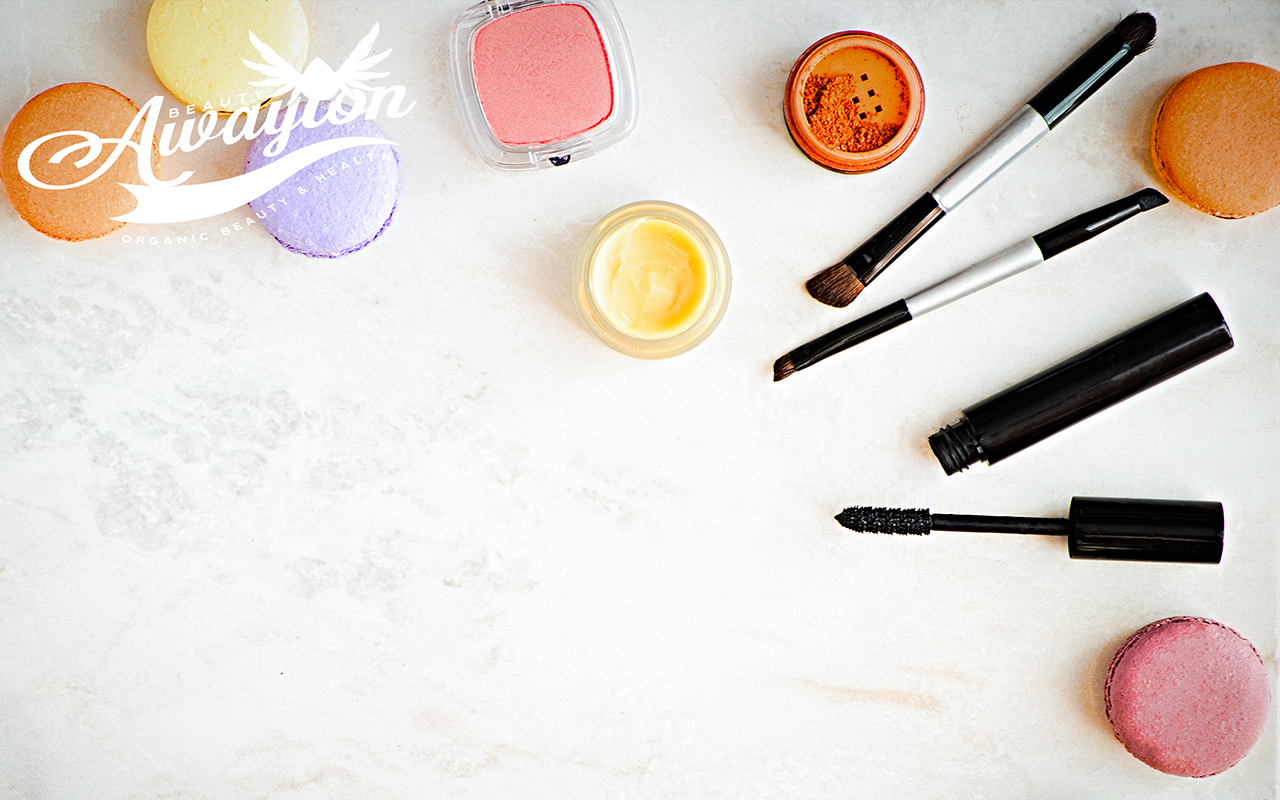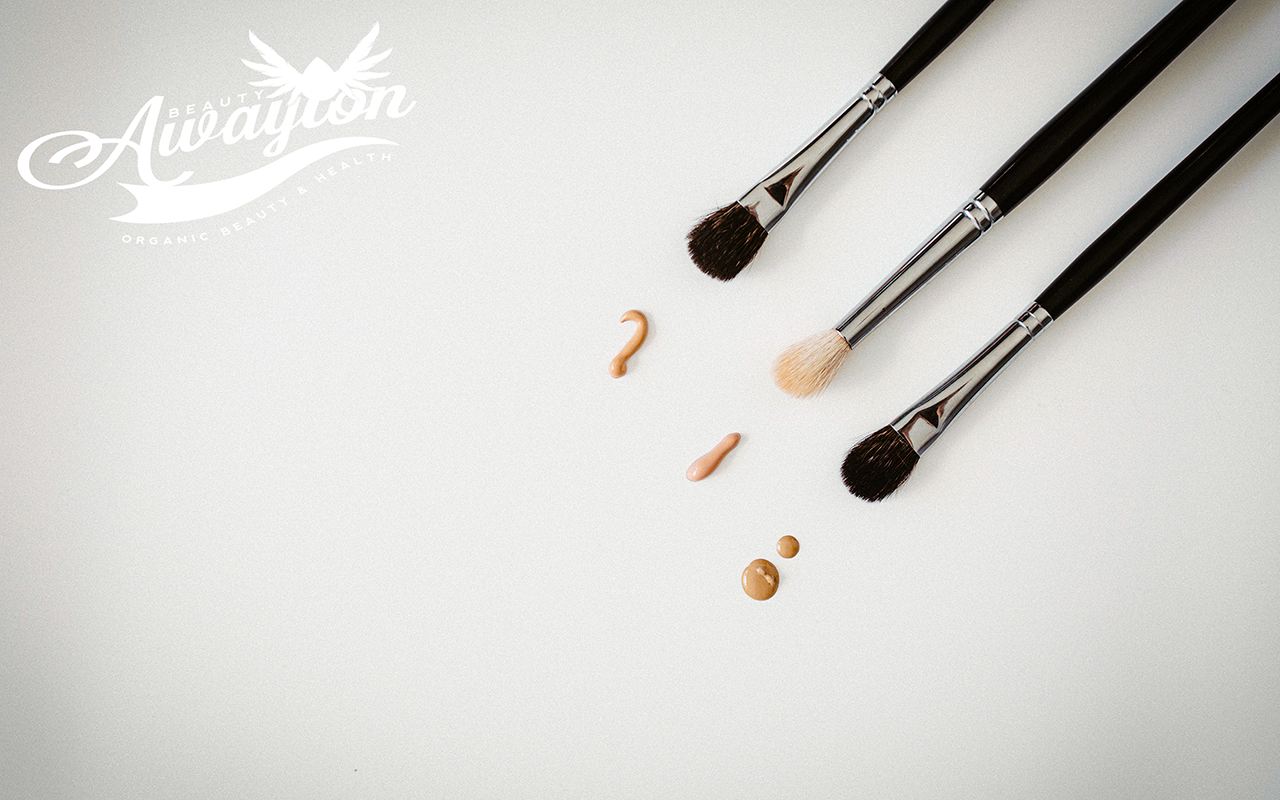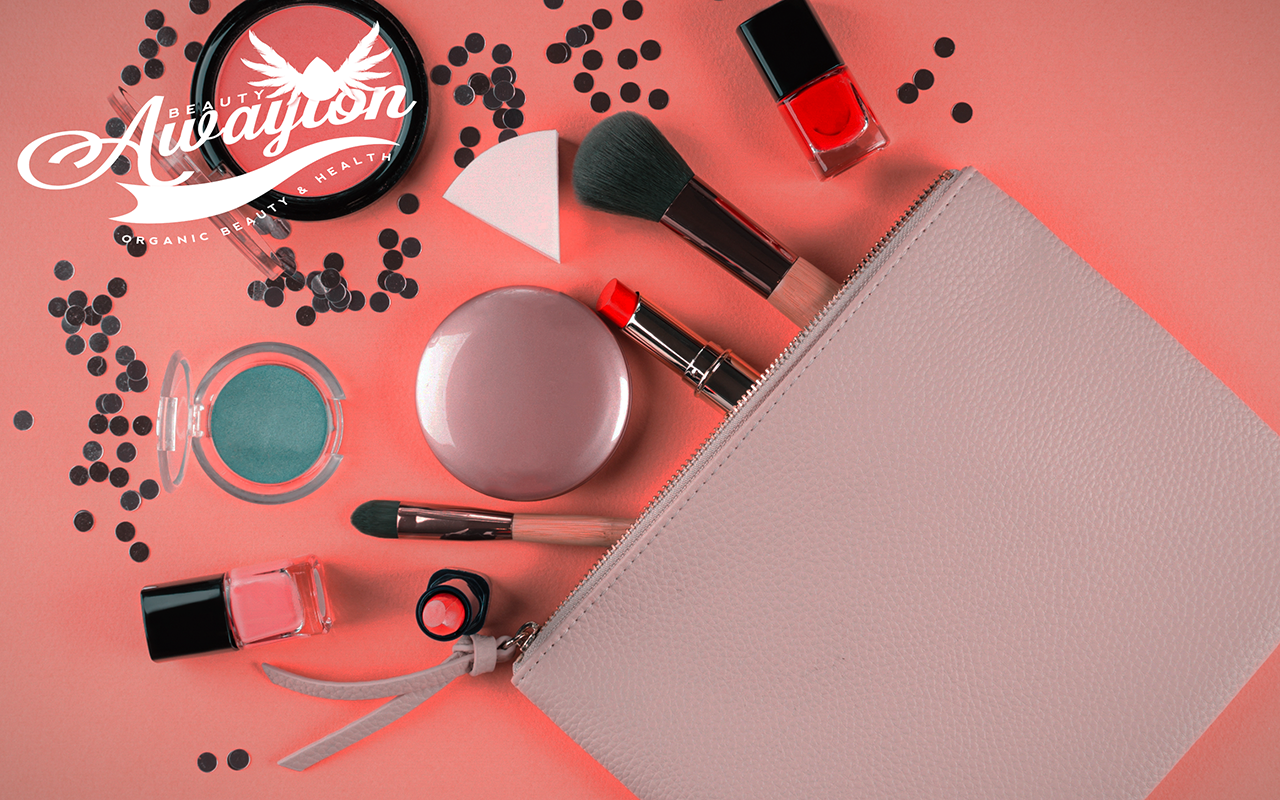Is Titanium Dioxide Safe for Your Body? The Beauty Industry Questions You Need to Ask | AWAYION BEAUTY
Hi, Friends!
Titanium dioxide is in 90% of your beauty products – especially the ones promising that perfect “glow up.” But here’s what’s getting attention: there’s a surprising gap between what we know and what we don’t know about this common ingredient.
And the truth? It’s more nuanced than you might think.
So what are the REAL facts? Is titanium dioxide something you should be concerned about in your daily beauty routine?
Let’s investigate the science behind titanium dioxide and why understanding what’s in your beauty products is essential for making informed choices. Because every woman deserves to know the full story about what she’s putting on her skin.
Super Psst… the big secret I’ve been hinting around on social media for a few months now has been unveiled… (it’s why I have been MIA…). Read on after this post for the juicy details.
*Disclaimer: This post contains zero affiliate links – just evidence-based information. As with any health decisions, consult your healthcare provider. Please see an honest licensed professional for personalized advice. Always do independent research. We base these insights on peer-reviewed scientific studies. Sources listed don’t equal endorsement of all views by Awayion.com.***
TL: DR A quick post glance:
- 🔬 What is titanium dioxide REALLY?
- 🤔 What does the science say about safety?
- 📝 Which beauty products contain it and why?
Sound juicy? Okay, Ladies. Let’s start!
1. What is titanium dioxide? (The Science Behind the Ingredient)

Titanium dioxide isn’t just some mysterious chemical – it’s actually one of the most studied cosmetic ingredients, but the research reveals some interesting complexities.
Here’s what the science tells us:
Titanium dioxide particles come in different sizes, and this size difference matters significantly for how they interact with your skin.
The Two Main Forms:
Form #1: Pigment Grade (98% of production) This is the larger particle form that gives your makeup its opacity and coverage. These particles are typically 200-300 nanometers in size – large enough that they generally stay on the surface of your skin rather than penetrating through it (American Chemistry Council, Inc., 2023).
Form #2: Nanoscale Particles (Ultrafine) These are the smaller particles, typically 20-100 nanometers, used primarily in sunscreens because they’re “invisible” on the skin while still providing UV protection. The smaller size has raised questions about potential skin penetration (American Chemistry Council, Inc., 2023).
What the Research Shows About Skin Interaction:
Here’s where it gets interesting: Recent scientific studies have found that titanium dioxide nanoparticles primarily remain in the outermost layers of skin (the stratum corneum) rather than penetrating deeper into living tissue. Multiple peer-reviewed studies demonstrate that these particles “cannot permeate intact and damaged skin and can be found only in the stratum corneum and epidermis.”
The Skin Barrier Science:
Your skin has three main pathways for substance penetration:
- Intracellular route – directly through skin cells
- Intercellular route – between skin cells through lipid layers
- Follicular route – through hair follicles and sebaceous glands
Multiple factors influence how substances interact with your skin: concentration, molecular weight, solubility, duration of contact, and skin condition. Your face, neck, scalp, and wrists have thinner epidermal layers and higher density of hair follicles, making them areas where absorption would be more likely IF it were to occur.
Current Research Consensus: While theoretical pathways exist for nanoparticle penetration, current scientific evidence “suggests” titanium dioxide nanoparticles in cosmetics remain primarily in the outer skin layers rather than achieving systemic absorption.
That said, you’re probably wondering if titanium dioxide is safe, right? If so, keep reading.
RELATED: Need an ultimate hair + makeup glow up? Yes? — See this
2. Is titanium dioxide safe? (What Does the Science Say)

To understand titanium dioxide safety, you need research skills that go far beyond typing into Google. Here’s your step-by-step guide to becoming a beauty ingredient detective:
Step 1: Access Real Scientific Databases
- PubMed (pubmed.ncbi.nlm.nih.gov) – Free access to medical research
- Google Scholar (scholar.google.com) – Academic papers and citations
- Cochrane Library – Systematic reviews and meta-analyses
- Your local university library database (often free with library card)
Step 2: Decode the Research Bias When you find studies, ask these critical questions:
- Who funded this research? (Check the “Funding” or “Conflicts of Interest” section)
- Who are the authors affiliated with? (University = more trustworthy than industry lab)
- What’s the sample size? (50 people vs. 5,000 people makes a huge difference)
- How recent is the study? (Science evolves – prioritize last 5 years)
Step 3: Look for These Red Flags
- Studies funded by cosmetic companies
- Research with tiny sample sizes
- Studies that only test one exposure method (like only inhalation, not skin absorption)
- Papers that use vague language like “generally recognized as safe”
Step 4: Find the Gold Standard
- Peer-reviewed journals (other scientists have vetted the research)
- Systematic reviews (combines multiple studies for bigger picture)
- Independent research (not funded by companies that profit from the results)
Step 5: Cross-Reference Everything Don’t trust one study. Look for patterns across multiple independent studies.
The Bottom Line: If a company profits from an ingredient being “safe,” be extra skeptical of research they funded. Follow the money, question everything, and trust your instincts.
What the Official Agencies Say:
FDA Position: The FDA has stated that titanium dioxide “may be safely used” in cosmetics, including products intended for use around the eye. They also regulate sunscreen active ingredients, including nanoscale titanium dioxide (American Chemistry Council, Inc., 2023).
IARC Classification: The International Agency for Research on Cancer (IARC) has classified titanium dioxide as “possibly carcinogenic to humans” (Group 2B). However, this classification is based specifically on inhalation studies in rats, not topical skin application. Importantly, extensive studies on titanium dioxide industry workers do not suggest an association between occupational exposure and increased cancer risk in humans (American Chemistry Council, Inc., 2023).
What This Means for You: The “possibly carcinogenic” classification applies to breathing in titanium dioxide particles (like in industrial settings), not to applying it to your skin in cosmetic products. The research on topical application shows different results than inhalation studies.
RELATED: Know how to dress for your body shape? No? — See this
3. What beauty products contain titanium dioxide? (And Why It’s There)

Understanding where titanium dioxide appears in your beauty routine helps you make informed choices about your personal care products.
The Common Product List:
Cosmetics: Pigment-grade titanium dioxide is used in cosmetics to provide coverage and brighten the skin. It allows for effective coverage with thinner application layers (American Chemistry Council, Inc., 2023).
Found in:
- Foundation and concealer (for coverage)
- Powder products (for opacity)
- Lip products (for color and coverage)
- Eye makeup (for pigmentation)
Sunscreen: Nanoscale titanium dioxide is used in sunscreens because it becomes transparent to visible light while effectively absorbing UV radiation. This provides UV protection without the white cast of traditional sunscreens (American Chemistry Council, Inc., 2023).
Why It’s Used:
- Effective UV protection
- Transparent application
- Photostable (doesn’t break down in sunlight)
- Generally well-tolerated by sensitive skin
Making Informed Choices:
The key is understanding that titanium dioxide serves important functions in these products – coverage in makeup and UV protection in sunscreens. The current scientific evidence suggests that when used topically in cosmetics, it remains primarily in the outer skin layers.
Major Takeaways (What the Science Currently Shows)
Based on current peer-reviewed research, here’s what we know about titanium dioxide in beauty products:
The Current Evidence:
- Multiple studies show titanium dioxide nanoparticles don’t penetrate through intact skin
- The cancer classification applies to inhalation, not topical application
- Titanium dioxide has been extensively studied and is considered safe for topical use by regulatory agencies
- It serves important functions in UV protection and cosmetic coverage
The Questions That Remain:
- Long-term effects of repeated exposure need continued study
- Individual skin sensitivity varies
- Research is ongoing as detection methods improve
Your Power to Choose: Every product purchase is a choice. You can:
- Choose products with or without titanium dioxide based on your comfort level
- Research ingredients that matter to you
- Consult with dermatologists about your specific skin concerns
- Stay informed as new research emerges
The Bottom Line: Current scientific evidence suggests titanium dioxide in cosmetics is safe for topical use, but staying informed and making choices aligned with your personal values is always empowering.
RELATED: Know how to look good in photos? Like really? — See this
Major Takeaways
You now know whether titanium dioxide in beauty products is safe for your body.
This post is a part of Awayion Beauty. So make sure you come back for more evidence-based beauty insights.
Know more deets on titanium dioxide?
Quick, save this pin (psst… it’s FREE) from Awayion’s Top Content Board on Pinterest: @Awayion
Secret Juicy Details
🎉 THE BIG REVEAL!
The secret I’ve been teasing on social media is finally here! I discovered something that changed my entire perspective on beauty, health, and life itself.
It led me to write my new book “Faith Looks Up: A Journey to Success by Faith” – a powerful guide that shows how trusting your inner wisdom (like questioning what you put on your skin) can transform every area of your life.
This book reveals:
- How to trust your intuition when making life choices
- The faith-based approach to researching and understanding complex topics
- Why questioning everything (while staying open to evidence) leads to breakthrough success
- A real life story of how I chose informed faith over fear and transformed my life
Ready to transform your decision-making from the inside out? Get your copy of “Faith Looks Up: A Journey to Success by Faith” and discover how the same research skills that help you understand beauty ingredients can lead you to unprecedented success by faith in your life. Click here.

 If you find a typo, just know that it happens to all of us!
If you find a typo, just know that it happens to all of us!
More posts you’ll love, because you clearly have great taste
Navigate Categories
- Abundance
- Arts
- Asian Beauty Secrets
- Authority in Christ
- AWAYION BEAUTY
- Beauty
- Dating/Courtship
- Dieting and Weight Loss
- DIY Beauty Hacks
- DIY Organic Beauty Hacks
- Dreams/ Dream Symbols
- Faith
- Faith Quotes
- Fashion Hauls
- Fitness and Exercise
- Food
- Forgiveness
- Hair Beauty Hacks
- Healthy Eating
- INNER BEAUTY
- Insomnia and Sleep Disorders
- Japan Beauty
- Korean Beauty
- Lifestyle
- Love/Romance
- Mind Body Healing
- Organic Beauty Brands
- Organic Makeup
- Organic Product Reviews
- Prayer
- Product Review
- random
- Relationship Advice
- Relationships/Love
- Repentance
- Sin
- Success Skills
- Travel
- Vlog | ASMR
- Wedding/Marriage
- Wellness
- Wellness/Joy
- Wisdom
American Chemistry Council, Inc. (2023). Titanium dioxide. Retrieved from https://www.americanchemistry.com/chemistry-in-america/chemistries/titanium-dioxide/
Bianco, C., Adami, G., Jez, E., Rizzato, S., Scalabrin, E., Zacchigna, M., ... & Toniolo, R. (2023). Titanium dioxide nanoparticles in sunscreens and skin photo-damage. Development, synthesis and characterization of a novel biocompatible alternative based on their in vitro and in vivo study. Materials Today Communications, 34, 105143.
Canadian Centre for Occupational Health and Safety. (2014). Titanium dioxide classified as possibly carcinogenic to humans. Retrieved from https://www.ccohs.ca/headlines/text186.html
Filipe, P., Silva, J. N., Silva, R., Cirne de Castro, J. L., Marques Gomes, M., Alves, L. C., ... & Polish, J. (2009). Stratum corneum is an effective barrier to TiO2 and ZnO nanoparticle percutaneous absorption. Skin Pharmacology and Physiology, 22(5), 266-275.
Gamer, A. O., Leibold, E., & van Ravenzwaay, B. (2006). The in vitro absorption of microfine zinc oxide and titanium dioxide through porcine skin. Toxicology in Vitro, 20(3), 301-307.
International Agency for Research on Cancer. (2010). Carbon black, titanium dioxide, and talc. IARC Monographs on the Evaluation of Carcinogenic Risks to Humans, Vol. 93. Lyon: IARC Press.
Labouta, H. I., & Schneider, M. (2013). Interaction of inorganic nanoparticles with the skin barrier: Current status and critical review. Nanomedicine: Nanotechnology, Biology and Medicine, 9(1), 39-54.
Osmond, M. J., & McCall, M. J. (2010). Zinc oxide nanoparticles in modern sunscreens: An analysis of potential exposure and hazard. Nanotoxicology, 4(1), 15-41.
Sadrieh, N., Wokovich, A. M., Gopee, N. V., Zheng, J., Haines, D., Parmiter, D., ... & Petrick, J. (2010). Lack of significant dermal penetration of titanium dioxide from sunscreen formulations containing nano- and submicron-size TiO2 particles. Toxicological Sciences, 115(1), 156-166.
Senzui, M., Tamura, T., Miura, K., Ikarashi, Y., Watanabe, Y., & Fujii, M. (2010). Study on penetration of titanium dioxide (TiO2) nanoparticles into intact and damaged skin in vitro. Journal of Toxicological Sciences, 35(1), 107-113.
Smijs, T. G., & Pavel, S. (2011). Titanium dioxide and zinc oxide nanoparticles in sunscreens: Focus on their safety and effectiveness. Nanotechnology, Science and Applications, 4, 95-112.
SUNY Upstate Medical University (2014) Drugs you rub into your skin can be dangerous, too | what’s up at Upstate | SUNY Upstate Medical University, Drugs you rub into your skin can be dangerous, too. Available at: https://www.upstate.edu/whatsup/2014/0404-drugs-you-rub-into-your-skin-can-be-dangerous-too.php (Accessed: 08 February 2025).
Xie, G., Lu, W., & Lu, D. (2015). Penetration of titanium dioxide nanoparticles through slightly damaged skin in vitro and in vivo. Journal of Applied Biomaterials & Functional Materials, 13(4), e356-e361.



